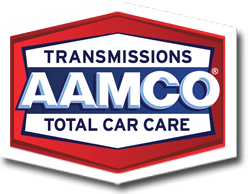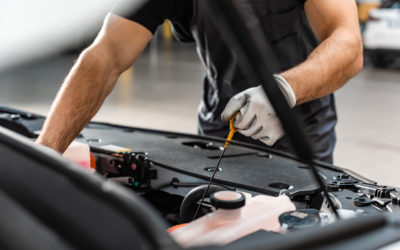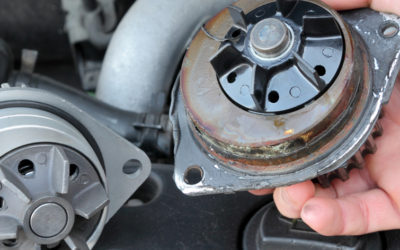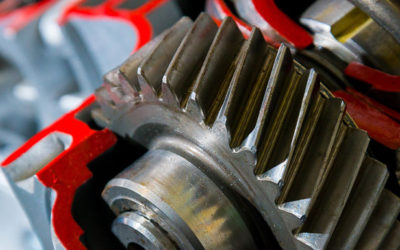Transmission systems are complex, and most drivers only know about the two basic types. That’s the manual transmission; that requires the driver to change gears by pressing the clutch and using a stick shift and the automatic transmissions that does all the shifting for you using clutches, a set of planetary gears, and a torque converter.
With ever-advancing automotive technology, there’s something in-between that offers the best of both worlds. Despite what is undoubtedly sophisticated and intelligent engineering, the dual-clutch engineering or double-clutch transmission has a mixed reputation with drivers. Due to this, it has not yet achieved the kind of ubiquity many people thought it would.
Sitting in-between an automatic and manual transmission, the simplest way you could describe their operation is that a dual-clutch transmission is an automatically operated manual transmission system – run by two clutches.
Recent Posts
Categories
- AAMCO Diagnostics Center
- Air Conditioning
- Blog
- Brakes
- Brakes, Tires, & Suspension
- Check Engine Light
- Colorado Automotive Advice
- Community Involvement
- Electrical
- Electrical
- Engine
- Exhaust System
- Featured Articles
- Infographic
- Maintenance
- Muffler
- Muffler & Exhaust
- news
- Oil Change
- Online Mechanic
- Radiator
- Radiator & Cooling System
- Safety
- Services
- Suspension
- Suspension System
- Total Car Care
- Transmission
- Transmissions
- Videos
How does a Dual Clutch Transmission Work?
While the advantages of the automatic transmission over the manual are obvious (taking the load of the driver), why are dual clutches becoming popular. In contrast, automated transmission systems are less complex and expensive.
Well, the dual-clutch transmission systems offer faster gear shifts and greater economy meaning, there’s a significant improvement in efficiency compared to other transmission systems.
To better understand why, the dual-clutch car transmission system comes with two clutches that are controlled by a sophisticated network of hydraulics and electronics, relieving the driver the need to use the clutch pedal. However, unlike the automatic transmission, the DCT clutches work independently. This system design is in such a way that one clutch controls the odd-numbered gears while the other controls the even gears.
This kind of set up makes it easy for the vehicle to shift between gears without interrupting the power flow from the engine to the transmission – like in the manual transmission.

Does the DCT Have Any Setbacks?
DCT’s are not for everyone, perhaps the reason why they are not as popular as they should. DCTs tend to have a lurching drive feel when cruising at low speeds. It is a more common occurrence when starting in first or reverse. Compared to automatics, they won’t creep out smoothly since a clutch is being let out. Since there is no driver input on the clutch, the pause is more noticeable and might be annoying.
Also, while the DCTs are not the usual buttery smooth kind of transmission most consumers expect, they come with significant mechanical and maintenance problems.

The Difference Between a DCT and an Automatic Transmission
At the cockpit, a DCT looks quite similar to the automatic car transmission system. However, that’s where all the similarities end. You’ll be surprised that the DCT has more in common with a manual transmission than an automatic. The main advantage of a DCT is better gas mileage and efficiency. It is because the flow of power from the engine is not disrupted, increasing efficiency. In an automatic transmission, the torque converter is designed to slip, meaning not all the power from the engine will be transferred to the driveline all the time, especially during acceleration.
How Does the DCT Compare to the Manual Transmission?
Manually shifting gears takes approximately half a second to complete. While this might not sound as much, compared to the DCT’s eight milliseconds shifting, its efficiency becomes apparent. Also, its fast-shifting capabilities make the DCTs considerably faster compared to the manual transmission system. The DCT’s also don’t have clutch pedals, and it is eliminated because the solenoids, hydraulics, and computers perform the shifting action for the driver.
Don’t Leak away your car’s life
AAMCO Colorado is staying open, practicing safe healthy measures, in order to provide essential car maintenance and diagnostic services to help our communities. Stay safe, and get your car maintained here.
AAMCO Colorado Dual Clutch Repair and Maintenance Service
Like any other component of your vehicle, your DCT has unique maintenance concerns. Therefore, you need to be very careful when you use both sides of your dual transmission. When in stop and go traffic, the automatic is preferable, while the manual mode is better for open roads or highways. At AAMCO Colorado, we offer the best car transmission repair and maintenance service in the region. Our professional technicians, years of experience, and state of the art equipment make clutch repair a walk in the park.
Depending on the make and model of your vehicle, your owner’s manual might not mention any transmission fluid or oil change routine; it’s best to do so every 30,000 miles. Contact us or visit your local AAMCO Colorado auto care center for more information about dual clutch repair and maintenance.
Recent Posts from Our Blog
Oil Changes & Oil Filter Replacement: What Does This Actually Do?
We all know oil changes are a regular part of car maintenance. But do you know what an oil change and oil filter replacement does for your car? Your car’s engine is a complex system of moving parts and your engine oil and oil filter play an important role in keeping...
read moreFirst 3 Things to Check if Your AC Stops Working
Having trouble staying cool this summer? When your car’s AC stops working, it can make any drive feel like a chore. Finding the problem behind your car’s AC trouble can feel tricky, but there are a few key areas where you can start looking. We’ll take a look at three...
read moreTop 5 Car Skills Your Teens Should Learn
It’s important to help your teenage kids become more comfortable around cars and understand basic car care. While much of car care is about knowing when to bring your car to an auto repair shop, there are also certain tasks that can be done at home, as well as ways to...
read moreOil Changes & Oil Filter Replacement: What Does This Actually Do?
We all know oil changes are a regular part of car maintenance. But do you know what an oil change and oil filter replacement does for your car? Your car’s engine is a complex system of moving parts and your engine oil and oil filter play an important role in keeping...
read moreFirst 3 Things to Check if Your AC Stops Working
Having trouble staying cool this summer? When your car’s AC stops working, it can make any drive feel like a chore. Finding the problem behind your car’s AC trouble can feel tricky, but there are a few key areas where you can start looking. We’ll take a look at three...
read moreTop 5 Car Skills Your Teens Should Learn
It’s important to help your teenage kids become more comfortable around cars and understand basic car care. While much of car care is about knowing when to bring your car to an auto repair shop, there are also certain tasks that can be done at home, as well as ways to...
read moreProtected: How to Check if Your Car Repairs are Covered by Insurance
Password Protected
To view this protected post, enter the password below:
Find Your Local AAMCO Colorado
Navigate our Blog
Recent Posts
Categories
- AAMCO Diagnostics Center
- Air Conditioning
- Blog
- Brakes
- Brakes, Tires, & Suspension
- Check Engine Light
- Colorado Automotive Advice
- Community Involvement
- Electrical
- Electrical
- Engine
- Exhaust System
- Featured Articles
- Infographic
- Maintenance
- Muffler
- Muffler & Exhaust
- news
- Oil Change
- Online Mechanic
- Radiator
- Radiator & Cooling System
- Safety
- Services
- Suspension
- Suspension System
- Total Car Care
- Transmission
- Transmissions
- Videos





